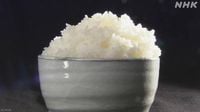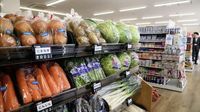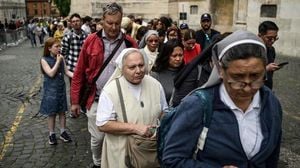The inflation rate in Japan has reached 3.6% in March 2025, marking the third consecutive year that the overall inflation rate has exceeded the Bank of Japan's (BOJ) target of 2%. This increase, reported by the Japanese Cabinet Office on April 18, shows a slight decline from February's inflation rate of 3.7%. The rise in consumer prices is attributed primarily to soaring food prices, particularly rice, which has experienced a staggering 92.1% increase compared to the same period last year, the highest since records began in 1971.
Core inflation, which excludes fresh food prices, saw a 2.9% rise in March, up from 2.6% in February. This measure, closely monitored by the BOJ, indicates that inflation remains persistent. The core inflation rate, which does not include fresh food prices, stood at 3.2%, aligning with analyst forecasts from a Reuters survey.
These inflation figures come at a time when Japan is engaged in trade negotiations with the United States, with the first round of talks taking place in Washington this week. Despite being a close ally of the U.S. in the Asia-Pacific region, Japan has faced significant tariffs under former President Donald Trump's administration. These include a 25% tariff on automobiles and auto parts, a 25% tariff on steel and aluminum, and a 24% retaliatory tax, with the automobile and aluminum-steel tariffs already in effect.
Analysts suggest that sustained high inflation could pave the way for the BOJ to continue raising interest rates, moving towards a more normalized monetary policy after years of ultra-loose policies. However, the U.S. tariffs may pose a challenge to Japan's economic growth, potentially complicating the BOJ's plans to increase rates. In a report released this week, Nomura analysts have revised their forecast for the number of BOJ interest rate hikes from two to just one by March 2027, predicting that the next increase will occur in January 2026.
Nomura's analysis also indicates that Japan's quarterly real GDP growth may fall to “near 0” in the third quarter of 2025 due to the impact of U.S. tariffs. As economic growth slows, wage growth in Japan could also decelerate during the spring wage negotiations in 2026. If wages rise more slowly, the BOJ may find it challenging to justify further interest rate increases following the negotiations.
The BOJ's next monetary policy meeting is scheduled for April 30 - May 1, 2025, where interest rates are expected to remain unchanged at 0.5%. It is anticipated that the BOJ will also lower its economic growth forecast during this meeting. Since the BOJ's first interest rate increase in 17 years in March 2024, there have been three hikes, with the most recent occurring in January 2025, raising the overnight lending rate to its highest level in 17 years.
Despite the challenges posed by U.S. tariffs, some analysts still predict that the BOJ may continue to raise interest rates this year. Chief economist Takeshi Minami from the Norinchukin Research Institute commented on April 18, stating, “U.S. tariffs are adversely affecting economic growth both domestically and abroad, and this is an issue that the BOJ needs to monitor. We expect the BOJ may delay its next rate hike until July or later.”
In a statement to the Japanese Parliament on April 18, BOJ Governor Kazuo Ueda acknowledged that rising consumer prices are primarily driven by increases in food prices. However, he noted that such cost-push inflation may gradually decrease. “We will continue to raise interest rates if core inflation remains above 2% as we expect. But we will also assess the actual situation to see if that inflation forecast materializes,” Ueda stated.
Oxford Economics has also revised its GDP growth forecast for Japan, projecting an increase of only 0.8% in 2025, a reduction of 0.2 percentage points from previous estimates, and just 0.2% in 2026, down 0.4 percentage points from earlier forecasts. This outlook is based on the expectation that the average U.S. tariff on Japanese goods will rise to 16% from 2% by the end of 2024.
Chief economist Norihiro Yamaguchi of Oxford Economics remarked, “We believe the BOJ may need to be more cautious about raising interest rates due to the weakening growth outlook and high uncertainty regarding trade policy.” Yamaguchi predicts that the BOJ will keep interest rates unchanged in 2025 and 2026.
As the situation unfolds, Japan's economic landscape remains under close scrutiny. The interplay between inflation, wage growth, and international trade dynamics will undoubtedly shape the BOJ's monetary policy decisions in the coming months. With the upcoming policy meeting, all eyes will be on the BOJ as it navigates these challenges amidst a complex global economic environment.





